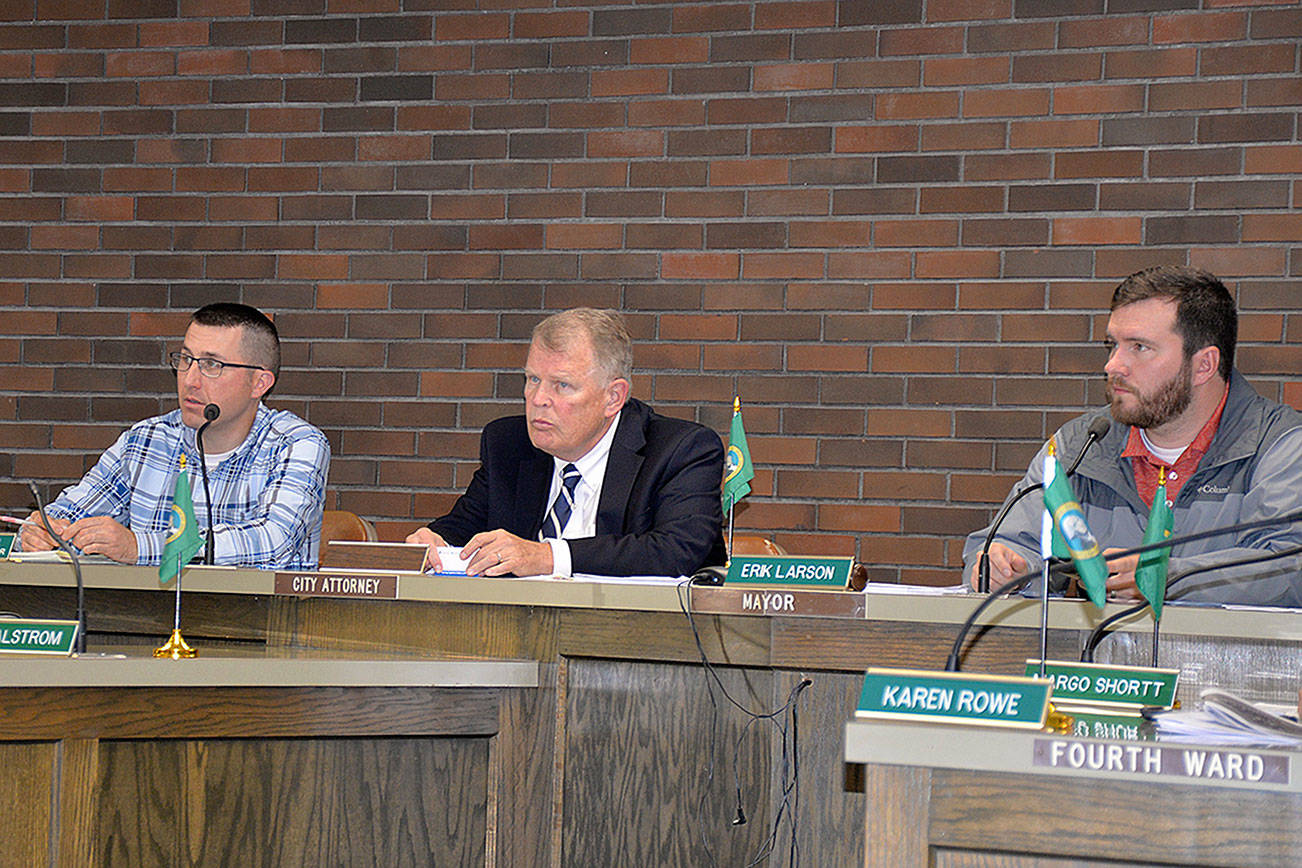The City of Aberdeen, looking for ideas on how to deal with the issue of homelessness, hosted representatives from Olympia and Walla Walla Monday evening to hear what those communities are doing. The workshop was announced to the public with just three days of prior notification by Aberdeen Mayor Erik Larson as a way to consider Aberdeen’s next steps to address the city’s homeless problem
Larson and the Aberdeen City Council intend to eventually clear all people from the city’s largest homeless encampment along the Chehalis River near downtown, and Larson has said he wants to create a site for homeless people to move to before the current camp is cleared out.
In recent weeks, Larson and several other city officials have visited Olympia and Walla Walla to tour their homeless facilities. Larson said the workshop session with the two representatives from out of town came together quickly. It was announced just last Friday, but the meeting was fairly packed with around 50 in the audience, including homeless advocates, some county officials and those who have been more critical of the homeless at city council meetings.
Casey Schaufler, an associate planner for Olympia, and Byron Olson, the deputy city manager for Walla Walla, each described their homeless facilities and what challenges they faced in creating them.
Olympia has a few different sites, including a vacant lot that’s fenced in near the city’s downtown transit station and sees between 105 and 110 people staying there on average each night in tents provided by the city. It has a low barrier to entry, meaning people will still be accepted if they are using drugs or alcohol, but it has rules that prohibit drug dealing or drug use while at the site. Olympia also has a tiny-house village with 29 units that serves homeless adults.
Walla Walla has taken a slightly different approach, working with the Walla Walla Alliance for the Homeless and other agencies to create a sleep center near the edge of town in an industrial area lot. It’s equipped with personal huts that homeless people can stay in overnight but are required to leave during the day. One aspect of Walla Walla’s home population is that 80% originates from Walla Walla, which is different than Aberdeen and Olympia where a higher proportion of people are believed to have relocated there.
Both Schaufler and Olson agreed that these facilities aren’t a solution to homelessness, but they have helped address the problem and make it much more contained in the respective cities. One thing in common was how both visiting cities partnered with homeless advocacy groups and religious groups like the Union Gospel Mission to operate their homeless facilities.
“It’s not a home, it’s shelter until you can get a home,” said Olson. “The city manager and I have said while it’s on our watch, we don’t want anyone to die on the streets of Walla Walla. That’s not acceptable. We will do whatever it takes. Our police, they won’t say, ‘Oh, I didn’t see that person lying down over there.’ Their first job is to get that person and get them into a safe place so they have a chance to move forward.”
Around a dozen people spoke at the public comment period asking questions to the two cities’ representatives, and several were impressed with and asked how the cities worked in partnership with various agencies to address the problem.
Aberdeen Police Chief Steve Shumate also spoke and gave a pitch in favor of mitigation sites, saying it allows the city to help those who are truly homeless while identifying others who may be preying on the more vulnerable.
During final comments, Larson spoke with hopes that discussions like this can transfer over to progress in Aberdeen and move on from what he said has been a frustrating process with the majority of participants on the extremes of whether to build a facility to assist the homeless or not.
“Discussions have been positive, negative, indifferent, shouting, awkward silence, the whole gambit,” said Larson. “What’s been a struggle for me is how divided the community is on this issue. … I think everyone’s willing to come back to the table, and that’s been a positive thing for me.”
Larson has been considering a list of potential sites to add a homeless mitigation site, but wouldn’t say where they are. He was considering an empty lot next to the downtown bus station, but it’s off the table now that the Grays Harbor Transit Board, which owns the lot, denied Aberdeen’s proposed lease for it.



